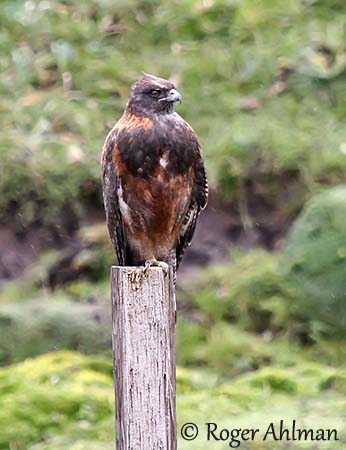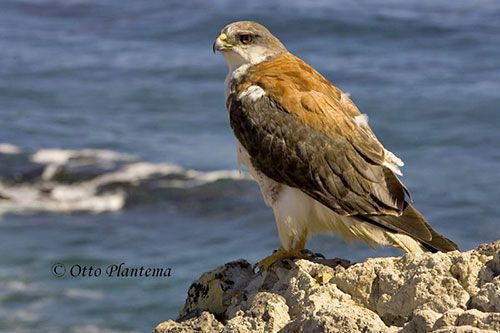
Fr: Buse tricolore
All: Rotrückenbussard
Esp: Águila Lomo Rojo, Aguilucho, Aguilucho común, Aguilucho Lomo Rojo, Busardo Dorsirrojo, Gavilán Variable, Gavilán Variado
Ita: Poiana dorsorosso
Nd: Roodrugbuizerd
Sd: Rödryggad vråk
Photographers:
Roger Ahlman
Pbase Galleries Peru and Ecuador
Didier Buysse
Vision d’Oiseaux
Jean Michel Fenerole
Photos d’Oiseaux du monde
Ken Havard
My Bird Gallery & Flickr gallery 1 & Flickr gallery 2
Eduardo Andrés Jordan
MIS AVES – AVES DE ARGENTINA
Otto Plantema
Trips around the world
Philippe et Aline Wolfer
OISEAUX D'ARGENTINE
Text by Nicole Bouglouan
Sources:
HANDBOOK OF THE BIRDS OF THE WORLD Vol 2 by Josep del Hoyo-Andrew Elliot-Jordi Sargatal - Lynx Edicions - ISBN: 8487334156
A GUIDE TO THE BIRDS OF COLOMBIA by Steven L. Hilty and William L. Brown - Princeton University Press – ISBN 069108372X
BirdLife International (BirdLife International)
Global Raptor Information Network - Working to Conserve Birds of Prey in nature
Wikipedia, the free encyclopaedia
Variable Hawk
Geranoaetus polyosoma
Accipitriformes Order – Accipitridae Family
INTRODUCTION:
Owing to the numerous variations of plumage, it is very difficult to determine species and subspecies.
The Variable Hawk (formerly Buteo polyosoma) has now three subspecies recognized. The G.p. poecilochrous or Puna Hawk is one of these subspecies, with G.p. exsul. The race “fjeldsai » is not recognized.
There is little genetic variability within this group, involving the confirmation of a single species G.p. polyosoma with three subspecies.
DESCRIPTION OF THE BIRD:
Biometrics:
Length: 46-56 cm
Wingspan: 110-120 cm
Weight: 950 g
The plumage is highly variable, and male and female often differ in colour. The rufous-backed birds are usually females, whereas the grey birds are males.
At least 27 distinct adult plumages are known for this species, but not related to geographic variations.

The adults of all morphs have a white tail with black subterminal band, and the wings are grey with blackish bars. Rest of plumage varies from very dark grey to whitish. However, some individuals have reddish-brown underparts (in the rare dark morph) and dark grey head and upper breast.
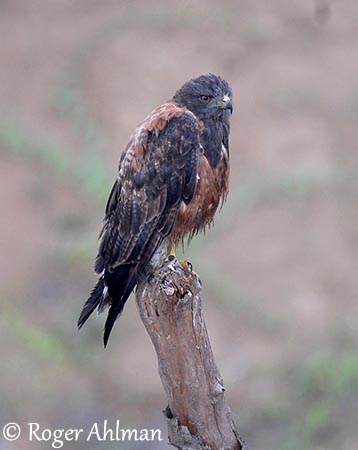
In pale morph, the nominate race has grey upperparts and white underparts finely barred black on flanks and belly (male), and similar appearance but with reddish-brown back (female). Some males may have chestnut back too.
The head is pale grey in male and darker grey in female.
The hooked bill is dark grey to blackish with yellow cere. The eyes are yellowish to pale brown. Legs and feet are yellow.
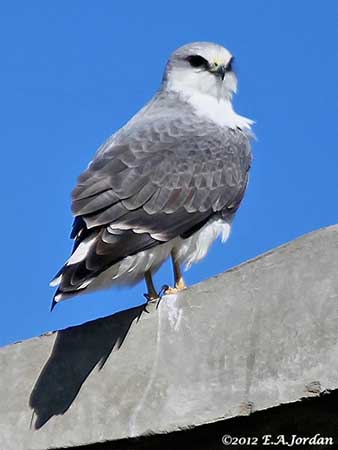
The immature may vary too. It has mostly brown plumage with more or less heavy white mottling. The underparts are buff streaked brown. There is sometimes a rufous tinge in mantle. The tail is greyish with several dark bands.
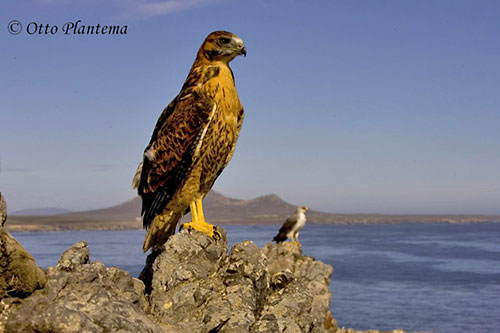
SUBSPECIES AND RANGE:
G.p. polyosoma (here described) occurs in C Andes of Colombia, S through Andes to Patagonia and Tierra del Fuego, and on Falkland Islands.
G.p. exsul occurs on Alejandro Selkirk Island in the Juan Fernandez archipelago.
This race is larger and darker than nominate, and lacks the rufous back.
G.p. poecilochrous (formerly Puna Hawk) occurs in the Andes, from S Colombia, S to N Chile and SW Argentina.
This race is larger than nominate, with broader wings and shorter tail. The plumage is variable too.
Length: 51-61 cm
Wingspan: 125-150 cm
Weight: 1000 g
The dark morph has all dark slate grey plumage except the white tail. The female has often chestnut mantle and breast. The whitish rest of underparts is barred blackish.
The pale morph resembles nominate in both sexes.
The immature is variable too. Some birds are all dark, whereas others are whitish below with some brownish mottling.
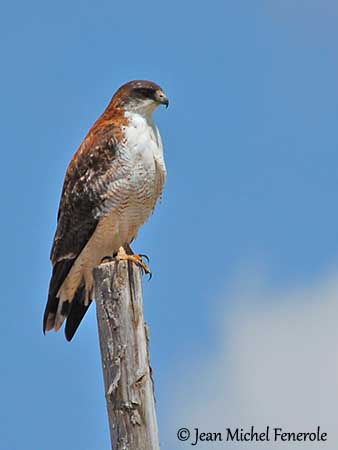

HABITAT:
The Variable Hawk of nominate race usually frequents open habitats at high elevations, between 1800 and 3200 metres, and higher according to the range, up to 4600 metres in Bolivia. In the northern parts of the range, it can be seen in temperate area forests, and at lower elevation in Peru and S of range. In Ecuador, it frequents the arid coastal lowlands. In Patagonia, it occurs in temperate and arid valleys. It is also found in treeless shrub-steppes, and river valleys with gallery forest.
It frequents more diverse habitats than G.p. poecilochrous which occurs at higher elevation, between 3000 and 5000 metres in Bolivia. It frequents open areas, deserts and semi-deserts, and also steep rocky areas in high mountains. It is common above the tree-line in páramo and puna habitats.
The race “exsul” is found on volcanic slopes and barren grazed grasslands at all elevations and various habitat types in Juan Fernandez archipelago.
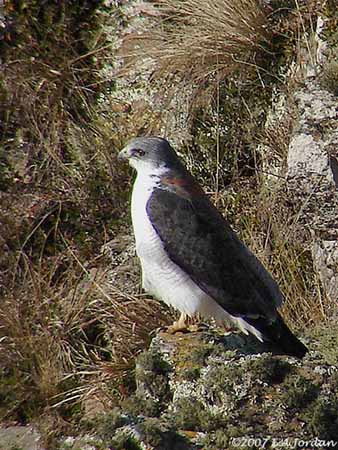
CALLS AND SONGS: SOUNDS BY XENO-CANTO
The Variable Hawk is quite vocal and especially during the breeding season, producing plaintive mewing, screeching and other varied sounds.
It calls during the flight displays, but also in aggressive behaviour. Sounds are related to displays and postures, or are used to attract a mate, to chase intruders away from the territory, and in defence behaviour.
The calls are loud and harsh in alarm or aggression, but much softer during interaction between mates and at the nest.

BEHAVIOUR IN THE WILD:
The Variable Hawk of nominate race hunts mainly mammals, and especially rodents, but it also takes lizards, frogs and orthoptera.
The race “exsul” feeds heavily on introduced mice, petrels and other birds, carrion at seal carcasses, and sometimes fish.
The race “poecilochrous” feeds on small mammals, insects and birds, but also earthworms, toad and fish. In Ecuador it takes forest rabbits (Sylvilagus brasiliensis), mice and some birds.

The Variable Hawk is a solitary hunter. It sometimes hovers actively while hunting, with nearly motionless wings. It often hunts from perch. Once the prey is detected, it swoops down onto its victim. It also circles in the air and dives onto the prey.
The race “poecilochrous” searches for prey by hanging in updraughts, low over the ground, but sometimes quite high-up too.
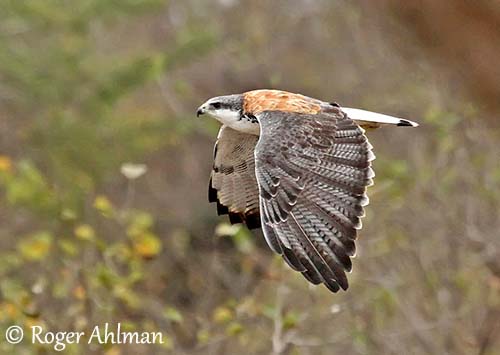
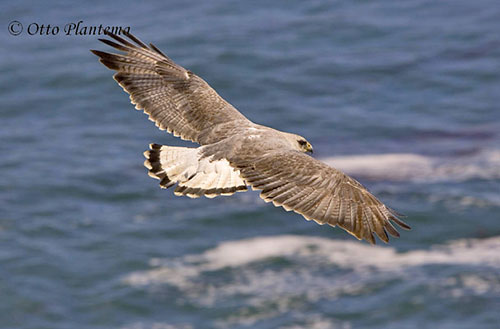
During the breeding season, calls and songs can be heard, as well from perched birds as flying ones.
Like numerous Accipitridae, the Variable Hawk performs aerial displays accompanied by calls, often in the surrounding of the nest-site.
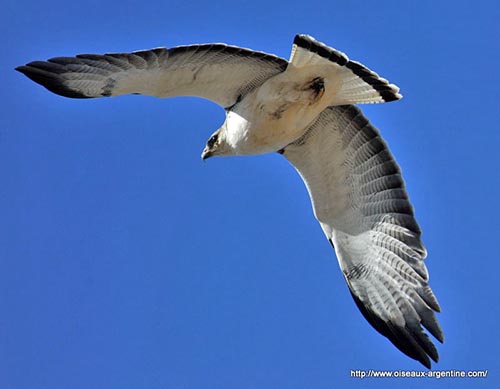
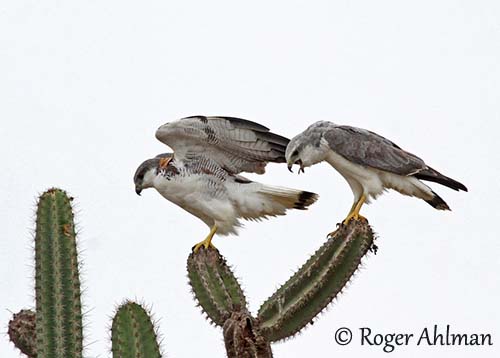
The pair reuses and arranges the same nest year after year, involving a very bulky structure. They are monogamous, although the race “poecilochrous” may perform co-operative breeding with males mating with more than one female.
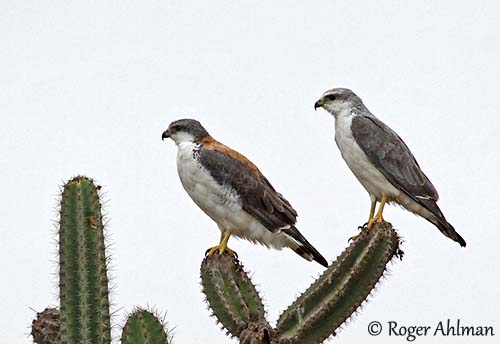
The Variable Hawk flies and soars along north-facing slopes where there are probably more updraughts. The race “poecilochrous” soars high over mountains.
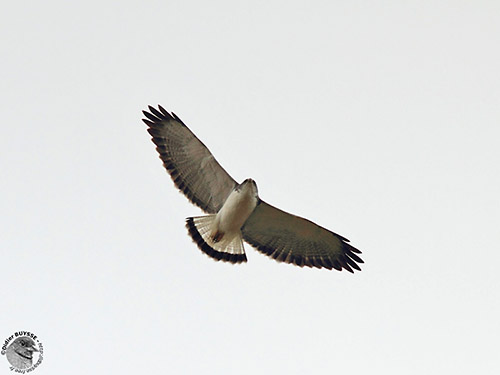
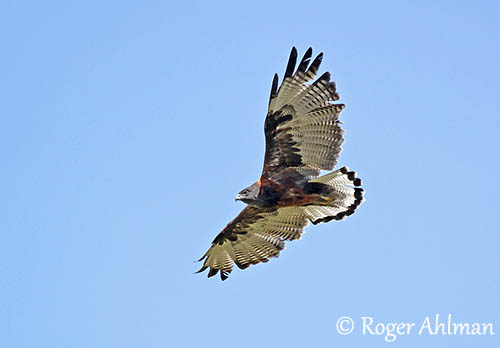
The nominate race from Chilean Andes and Patagonia move northwards to the subtropical lowlands of N and E Argentina, Paraguay and perhaps Uruguay. In Bolivia, the hawks in valleys may be residents, but those in puna may migrate from South. It is sedentary on Falkland Islands.
The race “exsul” is probably resident in its restricted range.
The race “poecilochrous” performs some local movements in N Chile, mainly altitudinal movements, from the high Andean Plateau at 4500 metres, down to 3000 metres after the breeding season. Bolivian and Peruvian populations appear to be resident all year round.

REPRODUCTION OF THIS SPECIES:
The Variable Hawk of nominate race breeds between December and May in Ecuador, September/October in Chile, November-December in Argentina and September/October in Falklands.
The race “poecilochrous” breeds during the warm and rainy season, with eggs most months in Ecuador.
The nominate race builds a bulky nest with sticks, and the inner cup is lined with moss, lichen, leaves and debris. It is placed on cliffs, trees, cacti or telegraph poles.
The birds of Falklands build the nest on ledges of high crags, although one nest was found on the ground. They may also use artificial structures.
The race “poecilochrous” builds a stick nest placed 20 metres up on cliff, on ledge or in cave.
The clutch is 1-3 eggs (nominate), at least 2 eggs (poecilochrous), and 2-3 eggs in Falklands. For some populations, the clutches can be larger in the southern parts of the breeding range.
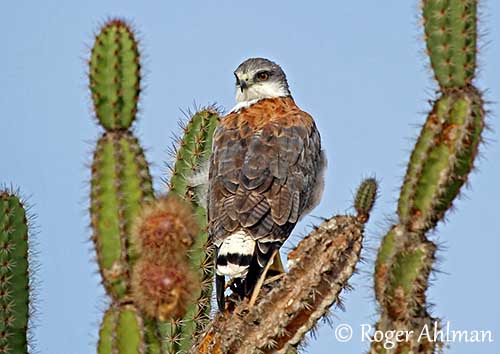
Both sexes incubate during 32-36 days. The downy chicks are fed by both adults. They fledge 40-50 days after hatching or more in nominate race, and 74 days after hatching in “poecilochrous”. The latter performs co-operative breeding too, with more successful results than in monogamous pairs.
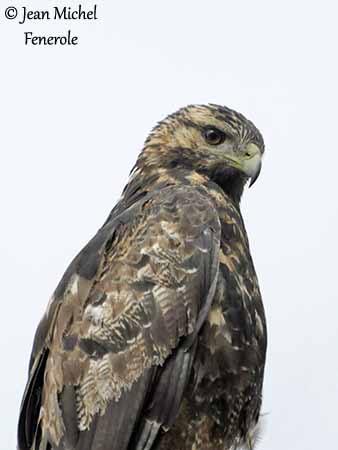
PROTECTION / THREATS / STATUS:
The Variable Hawk appears fairly common in its range, with some variations according to countries and races.
The nominate race “polyosoma” is evaluated as Least Concern, in spite of some declines in Chile.
The Falkland’s population was estimated at 500-1000 pairs in 1997, and appears still stable.
The race “poecilochrous” is evaluated as “Special attention”. It is affected by loss of native vegetation replaced by exotic plantations, and by human developments.
The race “exsul” has very restricted range. It is threatened by the degradation of the habitat by introduced sheep, goats and pigs to the islands. This population is placed in “Maximum priority”.
